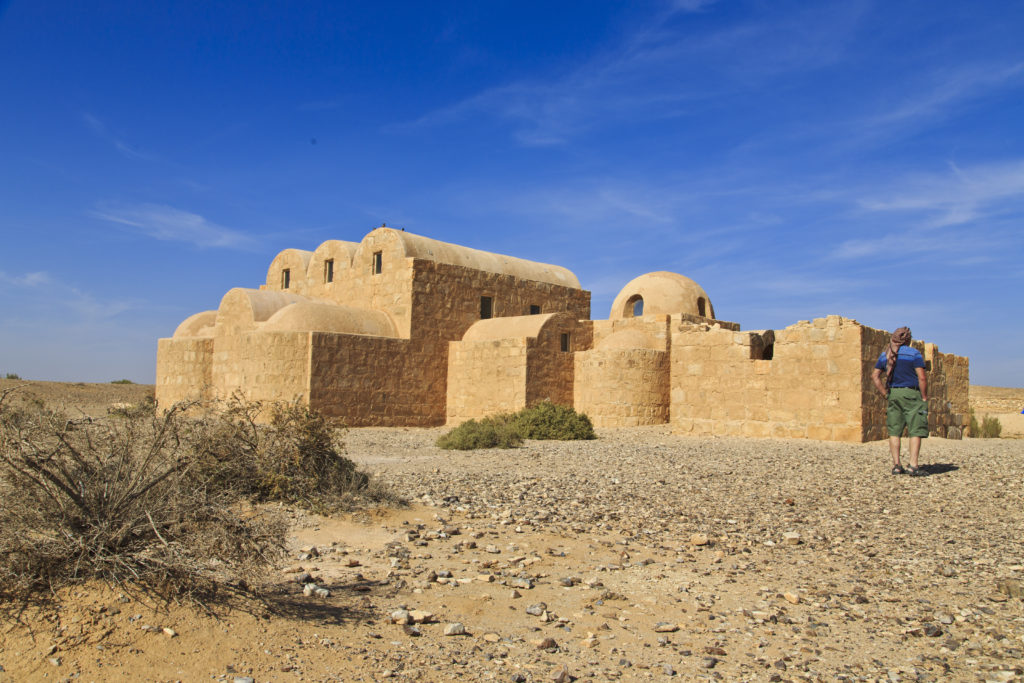The Desert castles consist of a number of minor castles and fortresses scattered over the desert in eastern Jordan. Most of the remaining castles are situated east of the capital Amman.
History
The castles were built between the 7th century and 8th century, roughly between 660 and 750, under the caliphs of the Umayyad dynasty who had made Damascus their new capital (in 661). The majority of the castles lie on the ancient trade routes towards Medina and Kufa.
The castles are partly rebuilt from earlier remains and partly new constructions. The function and use of the buildings are yet today not quite determined, scholarship has suggested that they might have served a variety of defensive, agricultural and/or commercial agendas. There are different theories concerning the use of the buildings, they may have been a fortress, a meeting place for Bedouins (between themselves or with the Ummayyad governor), badiyas (retreats for the nobles) or used as a caravanserai.
The castles represent some of the most impressive examples of early Islamic art and Islamic architecture.
Most of the buildings are now destroyed. Among the better preserved are:
- Qasr Al-Qastal, about 25 km (15 miles) south of Amman.
- Qasr Al-Muwaqqar, about 30 km (18 miles) south of Amman.
- Qasr Mshatta, about 35 km (21 miles) southeast of Amman.
- Qasr Hammam As Sarah, about 55 km (34 miles) northeast of Amman.
- Qasr al Hallabat, about 60 km (37 miles) northeast of Amman.
- Qasr Kharana, about 65 km (40 miles) east of Amman.
- Qasr Amra, about 85 km (52 miles) east of Amman.
- Qasr Tuba, about 95 km (59 miles) southeast of Amman.
- Qasr Azraq, about 100 km (62 miles) east of Amman.

